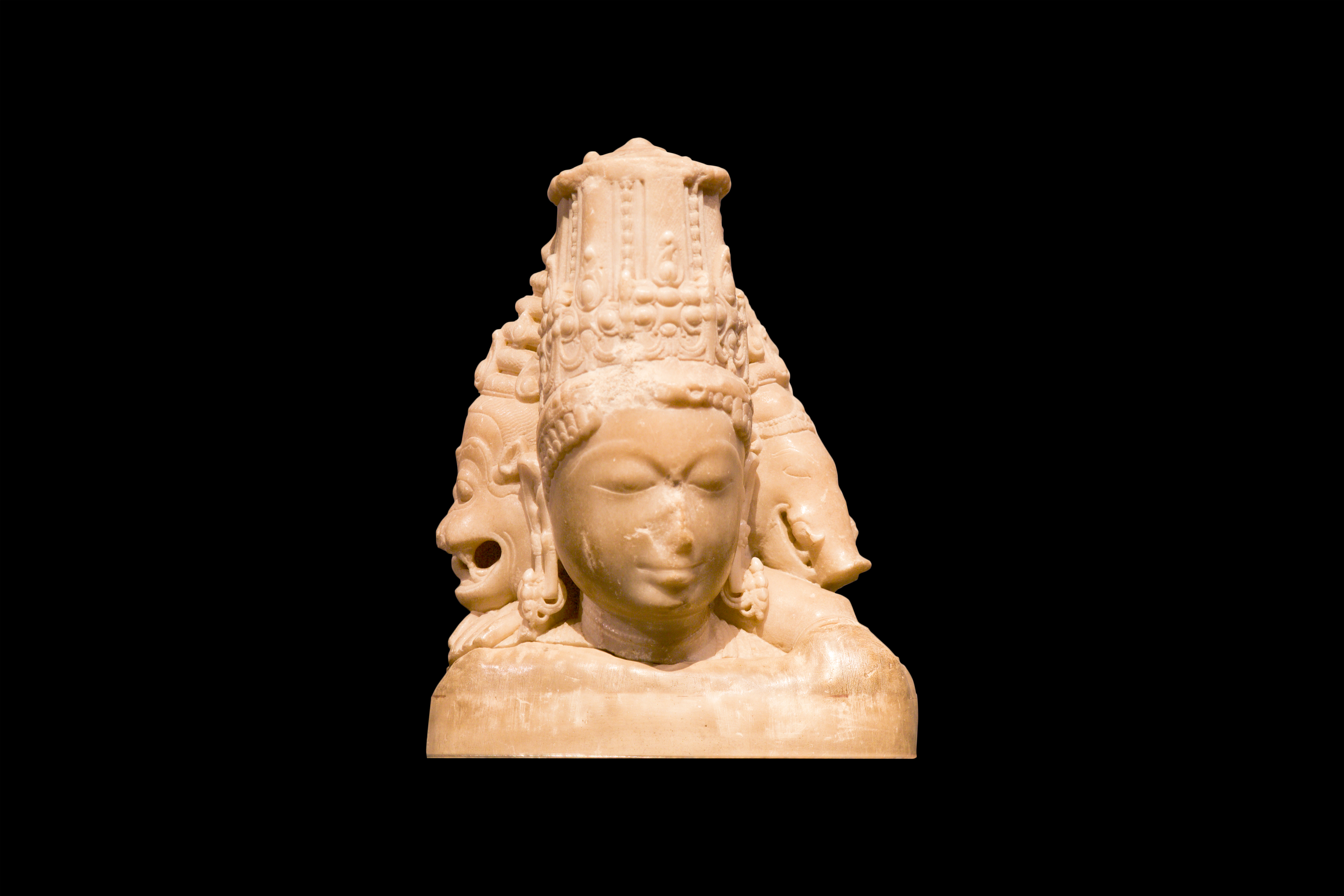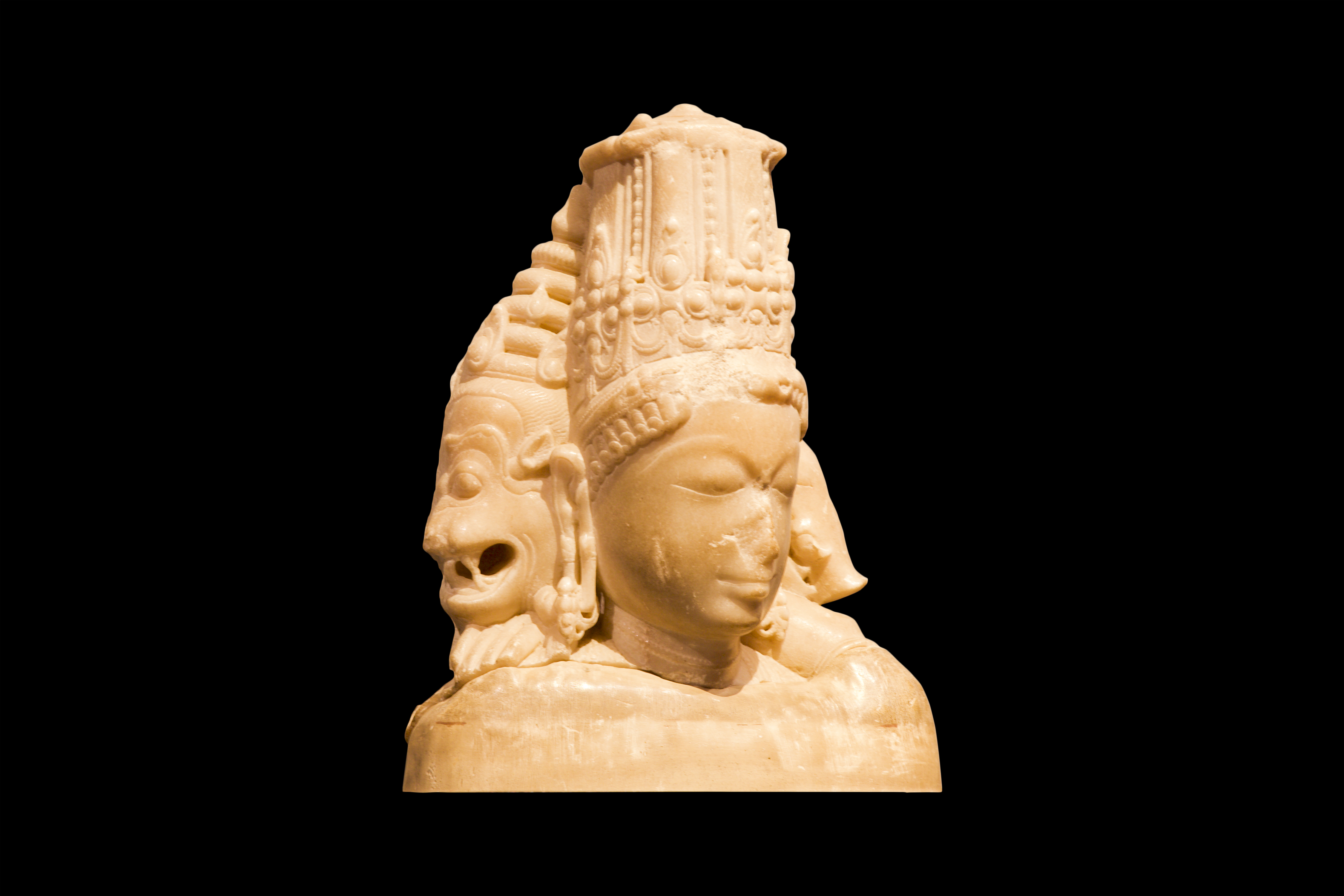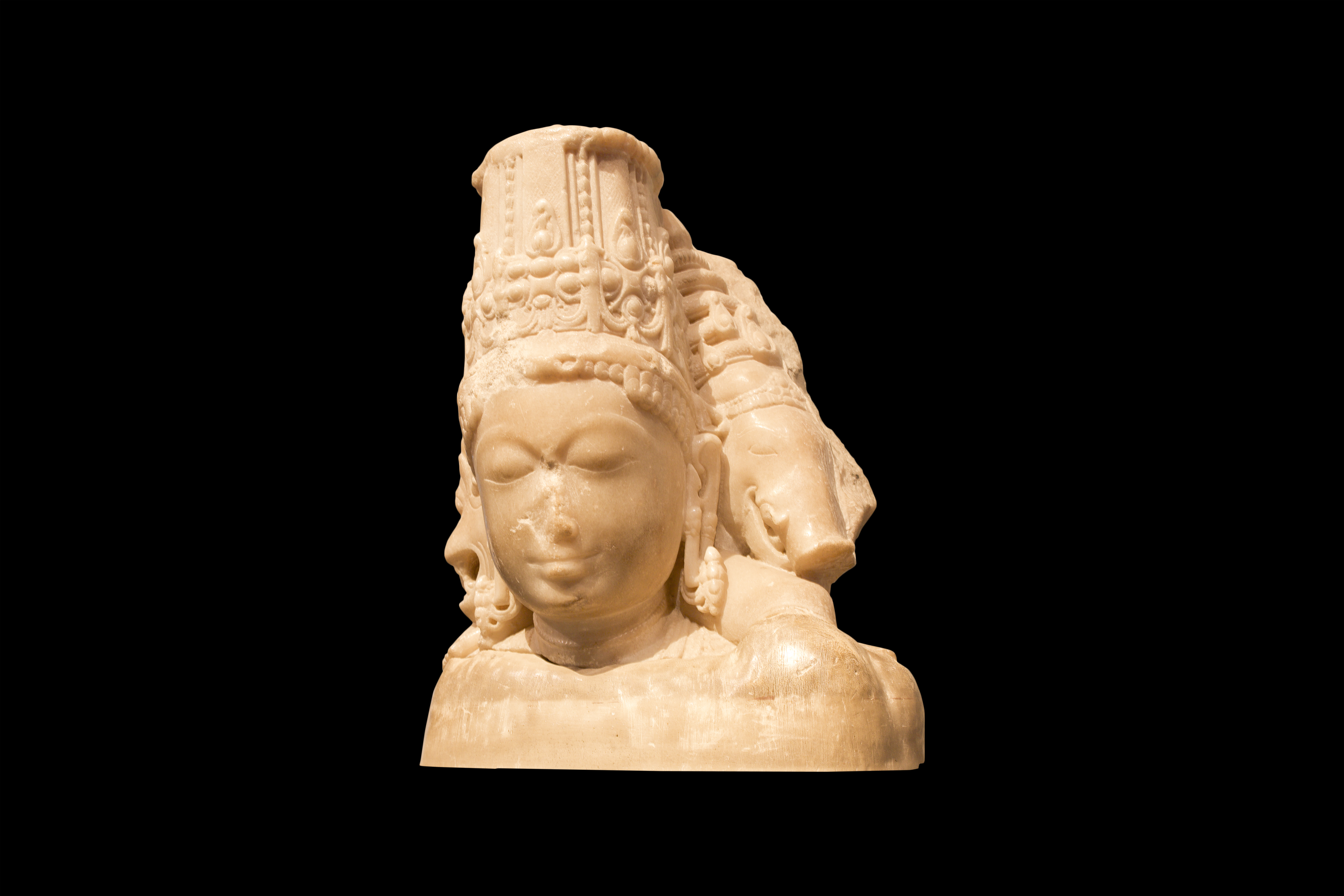Vaikuntha Chaturmurti
Original Location: Gujarat
Present Location: Chhatrapati Shivaji Maharaj Vastu Sangrahalaya, Mumbai
Date: 11th Century CE
Period: Early Medieval
Material: Marble
Objects: Sculpture
Dimensions: 37 x 27 x 19 cm
Credits: Chhatrapati Shivaji Maharaj Vastu Sangrahalaya, Mumbai
The first image of a Vaikuntha Chaturmurti is said to be of the pre-Kushan period, around 2nd century BC. This image comes from Bhita located in the district of Allahabad in Uttar Pradesh. Since then the images of the Vaikuntha Chaturmurti has been made under nearly all schools of art in India. A complete chaturmukh has four faces. The one in front is the human face depicting Vishnu, the one on the right is the lion face and on the left is the boar face. At the back is Kapila or the fierce face. Further the image has four hands holding the conch-shell, the disc, the club, and the lotus and is mounted on Garuda, the eagle, which is the mount of Vishnu.
The traditions of the marble sculpture of Gujarat in Western India grew tremendously during the medieval age. These are seen in the profusion of intricately carved sculptures which decorate the Jain temples at Mt. Abu, Palitana and Girnar. Beautiful images of the four-armed Vishnu were also made during this period. These images had all the characteristic attributes of Vishnu such as the mace, the discus, the lotus and the conch shell. The weapons are again shown as personified attendant figures on the base. On either side are decorative motifs and the miniature image of Brahma and Siva within rectangular niches.
This is a head of the Vaikuntha Chaturmurti made of marble. The middle head is a smiling human face which depicts Vishnu. The face to his right is in the form of a lion (Narasimha) and the one to his left is in the form of a boar (Varaha). The animal heads are the theriomorphic forms of the incarnations of Vishnu. The middle head is richly decorated with jewels. Vishnu is depicted with elongated ear lobes adorned with earrings. The nose has been damaged. He is also wearing a tall head gear which looks like an elaborate triple-crested crown. The eyes are closed and the facial expression is one of peace.
Many writers interpret the lion and boar as incarnations of Vishnu, being Narasimha and Varaha respectively. However, according to others, they represent cosmic emanations (vyuhas) of Vishnu. The Vyuhas represent various spiritual forms and powers of God such as courage, power and knowledge, especially manifest in the Panchatantra sect of Vishnu worship. Vaishnavism developed its own theological doctrine to explain the nature of the Supreme. The concept of vyuha (literally, "placing apart; orderly arrangement") attempts to outline the fundamental nature of the supreme God as well as the relationship between God and his personal manifestations. The supreme power makes itself manifest in a series of four successive emanations (chaturvyuha). Vasudeva is considered to be the first emanation and the fountainhead of the successive emanations and is represented in various forms in Hindu art. The head and seated lion panel to the right of Vasudeva, combining anthropomorphic and theriomorphic elements, be identified as Samkarshana, or the second vyuha. The reverse full figure is the third emanation known as Pradyumna and the head and boar panel is identified as the fourth emanation and is called Aniruddha.
 Government of Indiaa
Government of Indiaa




 Recognizing the ongoing need to position itself for the digital future, Indian Culture is an initiative by the Ministry of Culture. A platform that hosts data of cultural relevance from various repositories and institutions all over India.
Recognizing the ongoing need to position itself for the digital future, Indian Culture is an initiative by the Ministry of Culture. A platform that hosts data of cultural relevance from various repositories and institutions all over India.
